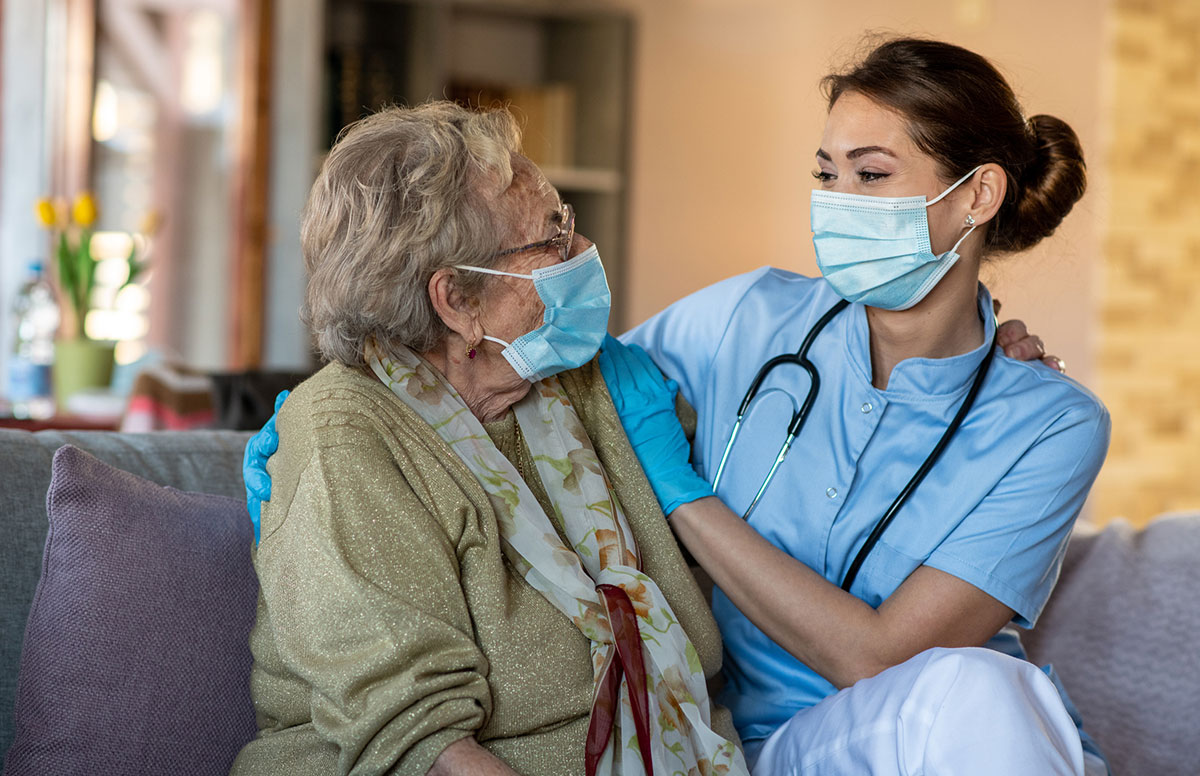As we move into fall and respiratory virus season, CDC projects a moderate COVID-19 wave with hospitalizations peaking at a level similar to last year, and expects influenza and RSV severity to fall into the normal range.
Because respiratory viruses, as well as other infectious diseases, take a higher toll on older adults, infection control is a primary concern for aging services providers in all care settings and communities—and, in particular nursing homes, which are surveyed on a range of infection control and prevention procedures. Infection control technology can help, as case studies from LeadingAge’s Center for Aging Services Technology (CAST) infection control and prevention toolkit illustrate.
“It is a rapidly developing field, one I am confident will continue to grow,” says Scott Code, vice president, CAST. “These tools are designed to support and reinforce a providers’ comprehensive infection control plan, and should be perceived as components of a holistic strategy, not the solution in its entirety.”
Here are a few examples.
Surface Disinfection With UV Light
Hartsfield Village’s regular infection control practices in skilled nursing, rehabilitation, and independent living settings are supplemented by the use of the Surfacide Helios® low-level disinfection UV-C System, which uses ultraviolet light to disinfect surfaces in resident rooms and other areas. The Munster, IN CCRC’s Helios system is a set of three mobile “towers” that emit UV-C light from floor to ceiling throughout an enclosed space, usually a resident room or a small common room.
Senior Administrator Susan Seydel says outcomes during the pandemic were excellent: less than a 1% infection rate among residents, and “almost no fully in-house transmission of the COVID virus.” she adds. The organization also improved its CMS STAR rating from four to five during the pandemic, thus potentially avoiding costly penalties.
Promoting and Monitoring Hand Hygiene Among Staff
After identifying hand hygiene as an important part of its infection control processes, in 2020, Piscataway, NJ-based Parker Health Group adopted the BioVigil Hand Hygiene system in its five long-term care communities—including skilled nursing, memory care, assisted living, and rehabilitation services.
The system monitors clinical employees’ hand hygiene “events” (washing with soap and water or using hand sanitizer). Electronic badges worn by staff record all hand hygiene events and communicate with BioVigil beacons installed outside and inside rooms and above hand-washing sinks.
Outcomes over the first year, which exceeded Parker’s expectations, included a 33% reduction in in-house acquired central line-associated bloodstream infections (CLABSI), and a 100% reduction of in-house acquired catheter-associated urinary tract infections (CAUTI). Overall staff compliance was above 96%. The system also helped in contact tracing of infected persons, and Parker received no hand hygiene violations once it began submitting BioVigil reports to the Department of Health.
Air Purification to Reduce Facility-Acquired Infections
Allentown, PA-based Phoebe Ministries sought to reduce infections from airborne pathogens by adopting medical-grade air purification by LifeAire Systems, a system designed to destroy the DNA and RNA of airborne pathogens and also capture and neutralize volatile organic compounds (VOCs).
The system was installed into ductwork at the Phoebe Allentown community, which includes two memory care floors, one used as a test and the other as a control. The test floor received ultra-pure air from the LifeAire equipment while the other floor did not.
The study floor, as measured against the control, showed an 88.43% reduction in airborne biological and fungal pathogens, and an 89.88% reduction in total VOCs, plus a significant reduction in surface bacteria. Facility-acquired infections (FAI) decreased both during the study period (by 39.6%) and afterwards (by 54.5%). There was also a 47% reduction in staff call-outs on the test floor.
Reductions in FAIs benefit residents and staff, but also offer a financial benefit. CMS withholds 2% of payouts to providers, and providers can earn that money back based on their rankings on health performance measures such as hospital readmission rates. Year-over-year improvement is considered in determining rankings, so a 39.6% FAI reduction can have a positive financial impact if it leads to a higher ranking. Reductions in staff call-outs reduce the need for overtime or agency costs.
Information Technology to Control Infections
To control infection outbreaks, track illness among residents and staff, and streamline data collection and reporting, Sapphire Health Services, Portland, OR, adopted HealthConnex, an infection prevention and control software package that collects diagnostic data and audit hand hygiene and PPE compliance by staff. Use of HealthConnex in all 20 of its communities, Sapphire reports, “led to a transition from a complex, time-intensive, paper-based approach to an efficient electronic process that is easier to use and manage.”
The severity, duration, and occurrence of outbreaks was reduced by 50%, and infection-control costs dropped by 35%. Time savings due to the streamlined reporting tools total roughly 200 hours per month.
For much more detail on the above case studies, visit CAST’s infection control case studies page.
Also, read our serial post, Continuing Our Fight Against COVID, for a complete rundown of LeadingAge resources and coverage of COVID-19.

 Shutdown Week Three: Impact of Ongoing Closure on Affordable Housing
Shutdown Week Three: Impact of Ongoing Closure on Affordable Housing CMS Debuts Models: ACCESS, ELEVATE and LEAD
CMS Debuts Models: ACCESS, ELEVATE and LEAD


